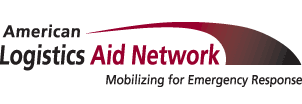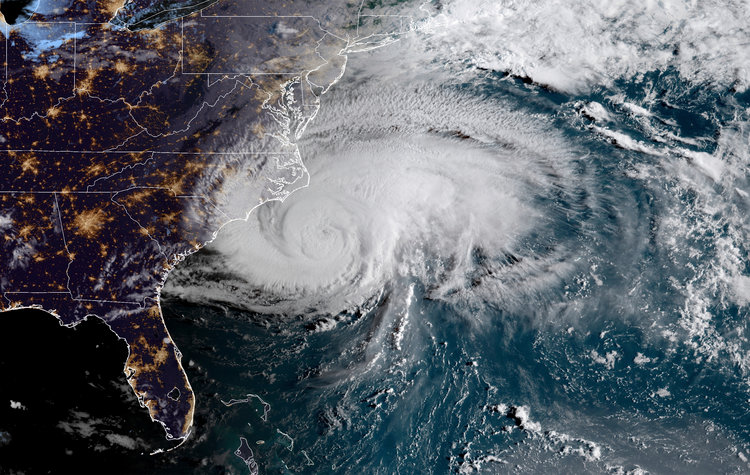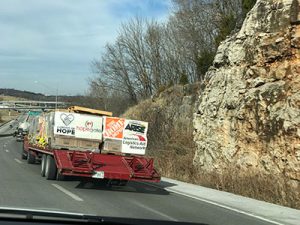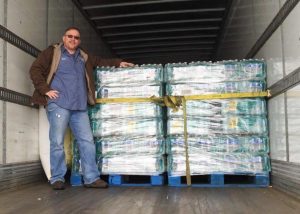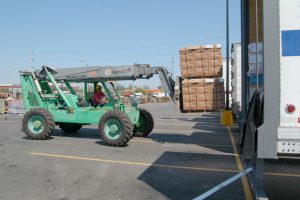[vc_row][vc_column][vc_column_text]It’s been several days since Hurricane Florence made landfall in the Carolinas. And by now, we had hoped to be able to offer some reassuring news along the lines of “thankfully it didn’t turn out to be as bad as people were predicting” or “the worst is over.”
But unfortunately, that’s not the case. In fact, if you look at the various images, it’s overwhelming – because there are many aftereffects like flooding that we can’t do anything about.
That’s the bad news.
But here’s the good news: Over the past few days, ALAN has continued to hear from numerous people like you who are ready, willing and anxious to help, and who continue to ask, “What can we do?”
ALAN has a few specific answers to that question already: There are numerous requests for warehousing on our micro-site that we are still trying to fill and that we could truly use your help with. (And more are arriving every day.) So if you have space that you’re willing to donate – or you know of someone who does.
We’ll also have many more specific answers in the coming weeks, because as Florence’s flood waters begin to recede, our relief partners will need help getting items to and from impacted areas, which is when we expect donated services like transportation to become especially critical. With that in mind, we ask that you continue visiting our micro-site often, because even though the storm has passed, we will need your help for a long time to come.
Meanwhile, there are still many ways all of us can rally the troops, put our shoulders to the wheel and begin to help the good people of the Carolinas put the pieces back together . . . .
First, we can avoid becoming part of the problem. Although it’s tempting to organize collection drives of products, the sad truth is these drives often create more challenges than they solve. Transportation capacity to disaster-impacted markets is often very tight, and it needs to be reserved for the most critical of materials. As a result, the last thing we need to do at this critical point is choke it even more. (This same advice also holds true for logistics companies that want to load up trucks and drive them to impacted areas. Unfortunately now is not the best time to do that, because relief organizations and shelters already have their hands full trying to handle the deliveries and goods they’ve already scheduled.)
So if you’re looking for a creative, tangible way to engage your employees, host a virtual collection drive instead: Pick a relief charity. Find out what it needs. Challenge employees to donate towards the purchase of those items. Consider matching their donations. And then send a check to that relief organization. It will be much more useful, and unlike many post-disaster product donations, it will not go to waste.
Second, we can use the assets and resources at our disposal. If you’re a business or individual with warehouse space, trucks, equipment, or expertise to share, go ahead and offer it now. Even if it is nowhere near the disaster area, let us know – because often the donated materials that urgently need to get to disaster sites may be located much farther away and require far more logistics support than you might imagine. And the thing you’re offering may be just the ticket.
Third, we can share area-specific information that helps emergency management with their planning and response activities. Over the past weeks, ALAN has been co- hosting daily calls between emergency management officials, government organizations and various members of the supply chain. As a result, we know that a big takeaway from those calls is that everyone is hugely concerned about how to deal with “predictable surprises.” For example, what happens if power is out and roads are closed for extended periods of time – or if water is tainted for weeks? And what are some innovative ways we can efficiently provide relief in spite of those constraints? This is when it really helps to hear from people who know the impacted area like the back of their hand – and who have been on the ground operating supply chains there day in and day out. You know what’s most useful to you as run your business in the Carolinas. Tell us where you find it – and how you’ve successfully surmounted area-specific challenges in the past – and let’s help our emergency management partners help survivors more efficiently.
Finally, we can build a culture of preparedness and resilience. As supply chain professionals, we’re already looking ahead to the busy holiday season. Let’s give ourselves an early holiday present by getting prepared in some form or fashion. Go to Ready.gov and share some of its resources and tools with your families and employees. Make a disaster kit. Hold a safety drill. Or set up time to meet with your county’s emergency manager to establish a relationship. Better yet, do all of the above – because we need you to be strong enough to withstand whatever disaster is next, and we want you around!
So, “what can we do?” Turns out, quite a lot.
Thanks for being part of the ALAN family, and thanks for all you do.[/vc_column_text][/vc_column][/vc_row]
